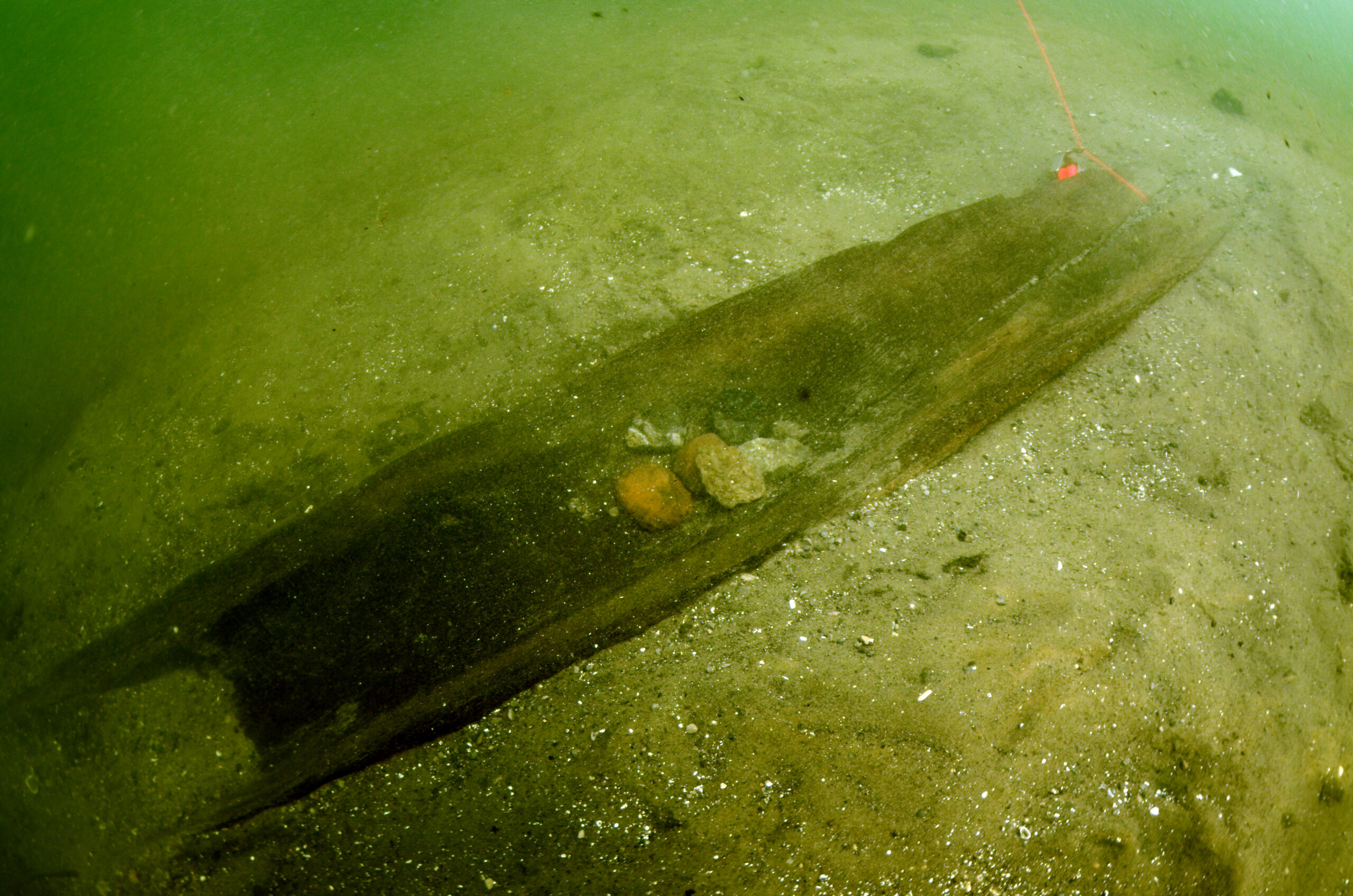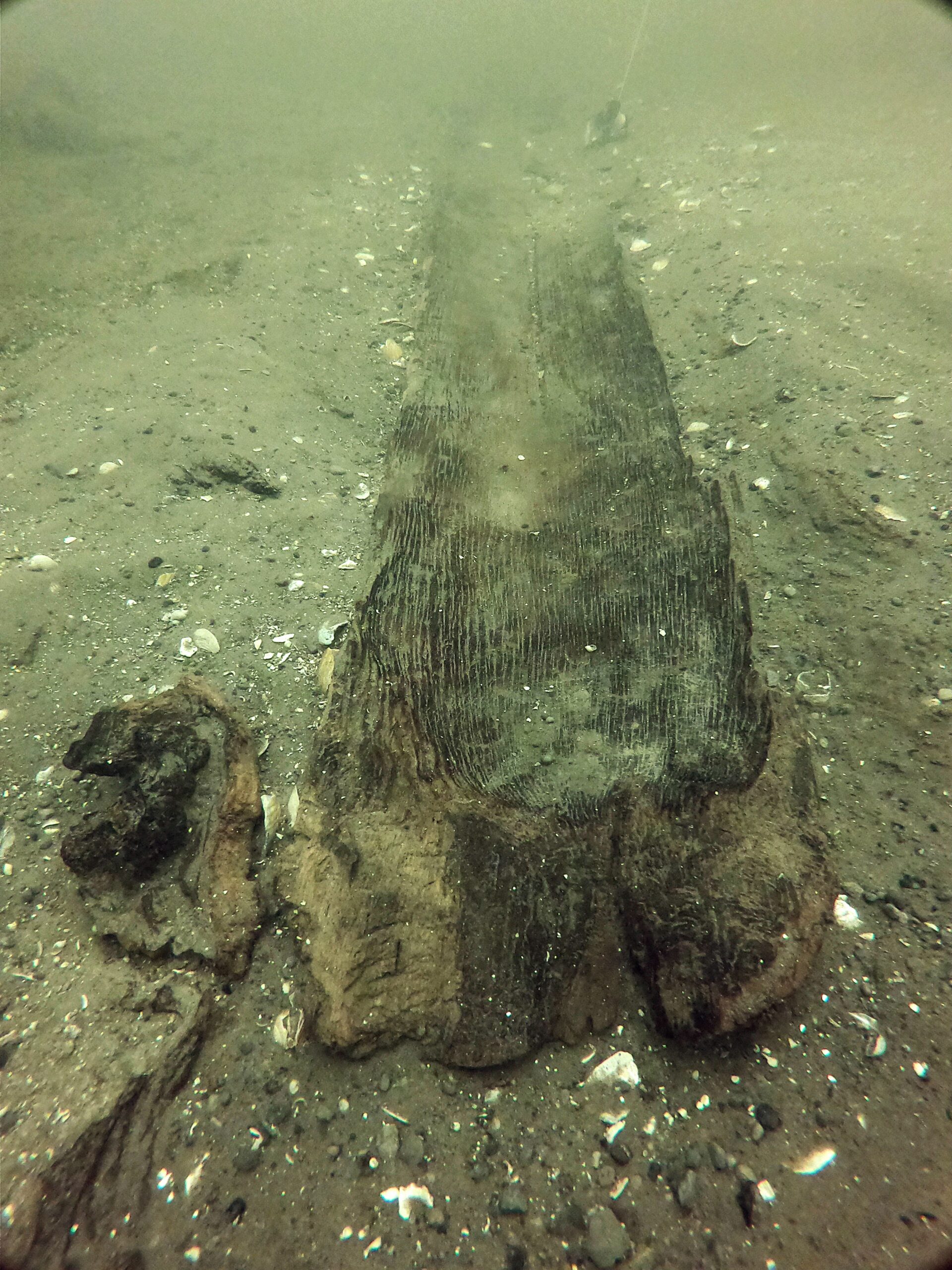
Dugout canoes are among the earlies type of boat made and peoples from all over the world built them including indigenous peoples of the America. Dugouts would be made from the log of a single tree. Carefully controlled fires were used to hollow out the log. The fires would then be put out at intervals and the charred wood would be scrapped out with shell or stone tools. Building a dugout was a very careful process, if the fire was too hot, the builders would extinguish it with a little waste. The fire would not be put out entirely, only enough to prevent the edges of the canoe from being burned. Canoe builders would do this process repeatedly, setting a small fire, cutting and digging out the burned wood, until they reached the bottom and had a useable canoe.
The first canoe was discovered in the summer of 2021 while maritime archaeologist, Tamara Thomsen was having a fun dive in Lake Mendota. In collaboration with the Ho-Chunk and Menominee nations the first canoe was recovered from the bottom of Lake Mendota on 2 November 2021. It measures 15 feet long and is mostly intact. It was discovered with ancient artifacts still aboard. Net sinkers that were once attached to sink an ancient fishing net. This dugout was radiocarbon dated to 800 CE it is 1,200 years old. This canoe was made from a White Oak tree.
The second Lake Mendota canoe was discovered in much the same way, during a fun dive in the summer of 2022 located nearby the first canoe. The second canoe was once again recovered in collaboration with the Ho-Chunk and Menominee nation from Lake Mendota on 22 September 2022. It measures 14.5 feet long and was much more fragile being broken up in many pieces. The second canoe was dated to 1,000 BCE, it is 3,000 years old. This canoe was made from an Ash tree.
Both canoes are currently sitting in a vat of polyethylene glycol to help preserve them. This chemical is often used in the conservation of wooden artifacts and wooden shipwrecks. Shipwrecks like the Vasa located at the Vasa Museum in Sweden, or the Mary Rose in England are conserved with polyethylene glycol. This chemical is a resin that fills ups the spaces in the wood that were once filled with water and hardens given the wood the same support. They will later be freeze dried to complete their conservation. After which they will be put on display in the Wisconsin Historical Society’s forthcoming new History Center due to open in 2026.
Since their discovery, at least 9 other canoes have been discovered. Though many of these canoes are much more broken up and fragile than the first two canoes. The Oldest canoe was radiocarbon dated to 2,500 BCE making it 4,500 years old, the oldest dugout canoe ever found in the Great Lakes region! The oldest dugout was made from Elm. The youngest out of these dugouts is 800 years old. These canoes ask more questions than they answer, like how the climate of Wisconsin has shifted over time, or what is happening in Lake Mendota that has revealed all of these canoes out of the bottom, or was their a settlement located near where the canoes are found and continuing research is going to make more exciting discoveries!
Dugout canoes were purposely cached in lakes, meaning that the peoples would purposely sink the canoes in the lake when they weren’t in use. Early indigenous peoples were very mobile, moving from place to place in search of food and resources. It would not be practical to haul around a 12-15-foot-long dugout canoe when moving to a new encampment. When the people returned, they could pull up the canoes to use them again. These dugouts were built by the ancestors of modern indigenous nations in Wisconsin and they connect us to our distant past.



